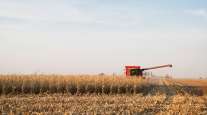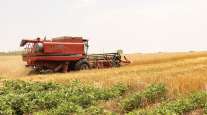More Women See Roles Expanding on Family Farms

As the average U.S. farmer ages, more women are stepping up as decision makers to help feed a booming global population.
The number of female producers increased 27% in the five years through 2017, according to the first new federal census of U.S. farms since 2012. More farms are reporting that multiple individuals are involved in decision making, with total producers increasing 6.9% from 2012.
While women have always played important roles on family farms, more are now running the operation, and showing up in new markets for niche crops and organic produce.
“The glass ceiling is getting cracked and busted here and there in a lot of ways,” said Renee Strickland, who co-owns a cow-calf operation as well as a business exporting live animals in Myakka City, Fla. “The tide is simply going to turn because of the enrollment in colleges of more women than men.”

The USDA has changed the way it reports on producer information in an “attempt to better represent all people involved in farm-decision making,” the agency said.
Farmers are getting older. The average age climbed to 57.5 in 2017, up 1.2 years from five years earlier, according to the census. Producers tend to have a couple of decades of experience under their belt, and about 74% live on their farm.
However, the more money a farm makes, the younger the age of the producers, on average. On operations with $1 million or more in sales, the average age is 53.8. The oldest class of farmers at an average 58.8 years old pull in farm revenues of $10,000 to $24,999.
Data skews older on age, because the government’s definition of a farmer is extremely broad and includes people who don’t have commercial operations, said Scott Irwin, an agricultural economist at University of Illinois. Many Americans retire and want to raise cattle or sheep, and are essentially lifestyle farmers, but are counted in the survey.

As the farming community gets more gender diverse, the racial makeup remains largely white. The number of Hispanic farmers increased 13%, but just to 112,451, while the number of black farmers rose about 2% to 45,508. About 3.2 million farmers are white, or 95% of the total. In the broader U.S. population, about 77% are white.
The census data just goes through 2017 and it shows that even before the U.S.-China trade war kicked in, it became hard to make money through farming. Years of bumper crops have lead to bulging inventories. Relatively good growing weather has helped production expand across the global at a time when gains in crop technology also helped to boost yields. The bottom line is ample supplies are keeping prices stuck in a rout.
Between 2012 and 2017, farms reporting net losses rose 1.2% to 1.15 million. That’s more than the number reporting net profits, which dropped 8.3% over the period to 891,329.

American agriculture continues to consolidate with the number of farms declining about 3.3% to 2.04 million. Mega-operations, with sales of $5 million or more, accounted for 35% of all sales, compared with 32% in 2012.
Consolidation is “the story of capitalism,” U.S. Agriculture Secretary Sonny Perdue said to reporters after the census data was released. “One of those conditions that I think contributes to that I think is the economy-of scale-challenges with capital investment.”
“We know what’s happened in equipment, when combines are from $500,000 to $750,000, that has to amortized over a larger number of acres,” he said. “I think that’s a natural flow of what we’ve seen for input costs.”




